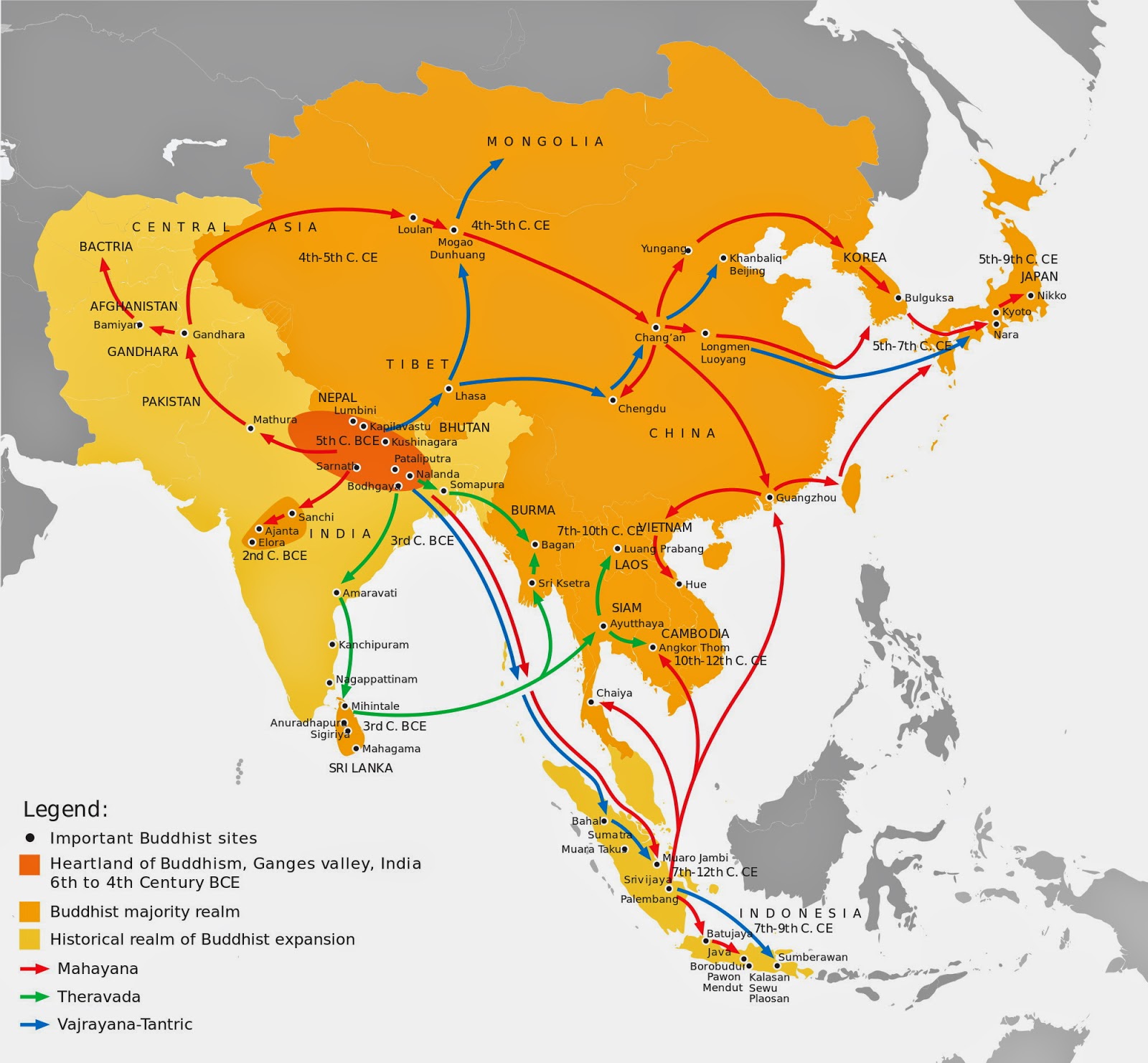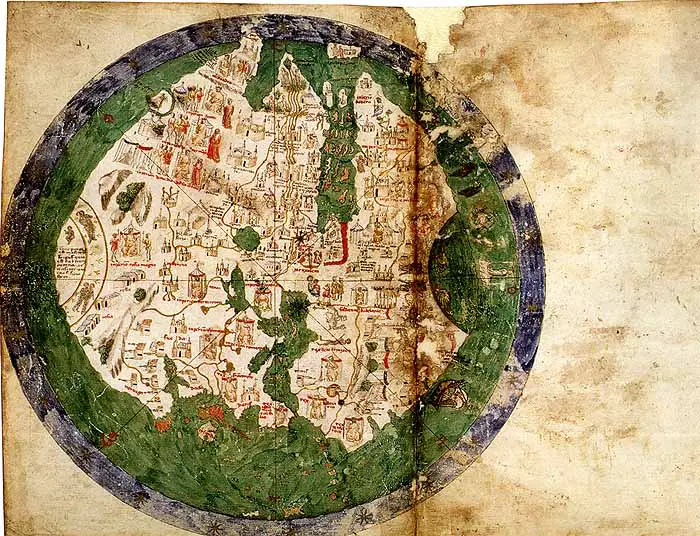How Buddhism Spread Across Asia: Trade, Teaching, and Time
Buddhism originated in northern India during the 5th or 6th century BCE, on the principles of Siddhartha Gautama, who would be referred to as the Buddha. He was born in Lumbini (now in Nepal) and taught the greater part of his life in the Ganges valley. Initially, it was a local movement grounded in philosophy, meditation, and renunciation. But it didn’t stay that way for long.
When monks journeyed and merchants transported concepts alongside their wares, Buddhism started to extend well past its birthplace. The map below illustrates this growth :

This excellent map shows how Buddhism gradually spread across Asia. It uses color-coded arrows to show the movements of different Buddhist schools—Mahayana (red), Theravāda (green), and Vajrayāna or Tantric (blue). The base data comes from historical texts, missionary records, inscriptions, and material culture such as sculptures and temples.
You’ll also find Buddhist heritage sites marked on the map, like Bodh Gaya (where the Buddha is said to have attained enlightenment) and Nalanda (a major center of learning in ancient India).
In the early days, what we now call Theravāda Buddhism (marked in green) was the main form. It reached Sri Lanka by the 3rd century BCE and gradually moved into Burma (Myanmar), Thailand, and Cambodia. Its focus stayed close to the original teachings of the Buddha—individual enlightenment, strict monastic rules, and simplicity.Around the first few centuries CE, a newer school called Mahayana Buddhism began to form. Unlike Theravāda, Mahayana introduced a broader path for laypeople and encouraged the idea of bodhisattvas—those who delay their own enlightenment to help others. It’s represented on the map in red and traveled through northern India into China by around 50 CE, then into Korea and Japan over the following centuries.
Parallel to this, however, in the high Himalayas and Central Asia, a third form developed—Vajrayāna or Tantric Buddhism. It absorbed influences from local beliefs and is still practiced in Tibet, parts of Mongolia, and Bhutan. It’s shown in blue on the map and spread mostly between the 4th and 9th centuries CE.
What’s interesting is how closely the spread of Buddhism followed trade routes like the Silk Road and maritime paths through the Indian Ocean. Buddhist monks often traveled alongside merchants, stopping in port cities, learning new languages, and adapting their teachings to local customs. Some of these cultural exchanges can still be seen in temples built in Sri Lanka, Java, and mainland Southeast Asia.
By looking at the map above, you can see how Buddhism didn’t move in a straight line. It looped, backtracked, and branched off into new places and new ideas. Some regions embraced one form, others mixed several. Today, you’ll find echoes of these movements in everything from Southeast Asian temples to Zen gardens in Japan.








